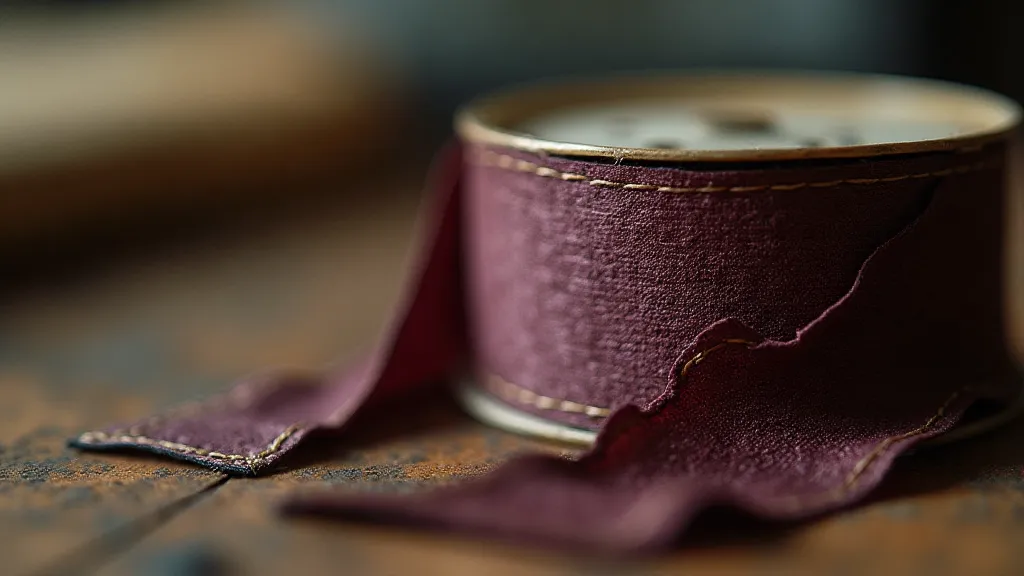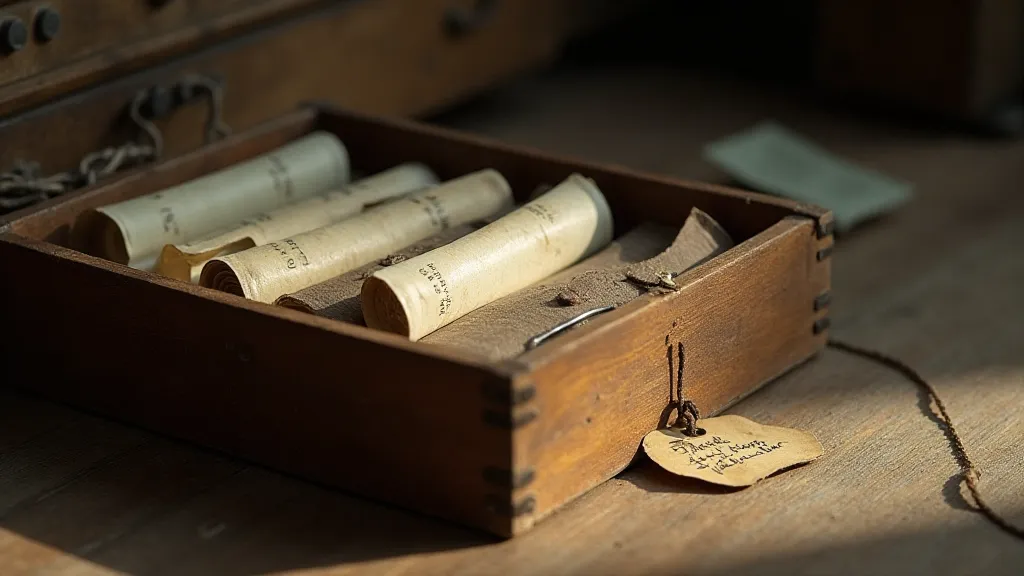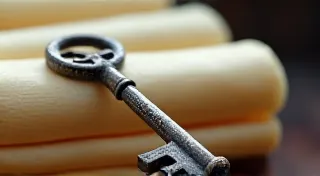Ephemeral Inks: Deciphering the Fading Stories Within the Ribbon
There's a certain melancholic beauty in holding an antique typewriter ribbon. It’s not just a strip of fabric, inked and ready to imprint words; it’s a fragile vessel, holding fragments of conversations, drafts of dreams, and echoes of moments long past. To collect, restore, or even simply appreciate these ribbons is to engage with a tangible connection to the past, a time when the act of writing felt more deliberate, more tactile. But that beauty is intertwined with a poignant reality: these ribbons are fading. The vibrant hues that once leaped from the platen are muted, washed out, or simply gone, leaving behind a ghostly trace of what once was. Understanding this fading, and learning to preserve what remains, is key to honoring these ephemeral treasures.
I remember the first time I encountered this reality. I was helping my grandfather clear out his attic. He's a retired journalist, and surrounded by boxes of his old notes and equipment. Among them, a dusty box overflowing with typewriter ribbons. They were a riot of colors – deep reds, blues, greens, and browns. I was captivated, imagining the stories each one held. But as I held them up to the light, I noticed the fading. The once-bold colors were subtle shadows of their former selves. It wasn’s just a matter of age; it was a palpable sense of loss. That moment sparked a fascination, a desire to understand why these vibrant inks surrendered to time.
The Alchemy of Typewriter Ribbons: A Brief History
To appreciate the fading, we need to understand the evolution of typewriter ribbons. Early ribbons, prevalent in the late 19th and early 20th centuries, were often made of silk, sometimes even hand-woven. These early silk ribbons were prized for their softness and ability to produce sharp, even impressions. The inks used were primarily aniline dyes, derived from coal tar. While providing a wide range of colors, aniline dyes were notoriously susceptible to light and oxidation, a vulnerability that would define much of their lifespan. The manufacturing process itself was often a craft, with skilled artisans painstakingly applying the ink to the silk fabric. Companies like Hammond, Smith Corona, and Remington competed fiercely, each striving to develop richer, more durable colors. This intricate process, akin to the work of an alchemist transforming base materials into something beautiful, is something collectors and enthusiasts often delve deeper into; for those interested in the restoration aspects, you might find The Alchemist's Formula: A Beginner’s Guide to Ribbon Restoration Techniques particularly insightful.

The mid-20th century saw a shift towards nylon ribbons. Nylon offered greater durability and resilience compared to silk, but the inks used were still largely susceptible to degradation. While improvements were made over time – the introduction of more lightfast dyes – the fundamental fragility remained. The mass production that characterized this era also meant a decline in the level of craftsmanship compared to the earlier, artisanal approach. The decline of silk ribbon production was a pivotal moment, contributing to a shift in the very nature of the materials and techniques used. Understanding this transition requires a deeper look at the factors that led to the gradual phasing out of this delicate and prized material. For a comprehensive exploration of the reasons behind The Loom's Lament: Understanding the Decline of Silk Ribbon Production, you're encouraged to consult that resource. It will reveal the complex economic and technological forces at play.
The Enemies Within: Factors Contributing to Fading
The fading isn't random; it's the result of several interconnected factors. Light is the most significant culprit. UV radiation breaks down the chemical bonds in the dye molecules, causing them to lose their color. Oxygen also plays a role, causing oxidation, which alters the chemical structure of the dyes. Heat and humidity exacerbate the process, accelerating the breakdown. The type of ink itself is critical; some dyes are inherently more lightfast than others. Even the storage conditions have a profound impact. Ribbons stored in damp, poorly ventilated areas will deteriorate far more quickly.
Consider the impact of prolonged exposure to sunlight. A ribbon left on a windowsill for decades would experience significant color loss, while one carefully stored in a dark, cool environment could retain a surprising amount of its original vibrancy. It’s a poignant illustration of how human intervention – or neglect – directly influences the lifespan of these delicate objects. The subtle nuances of those color shifts and what they reveal about the passage of time are often a subject of fascination for those seeking to understand the history recorded on these ribbons. For a deeper look at how pigment history helps unravel these stories, you can explore The Ghostly Echoes: Unraveling Ribbon History Through Fading Pigment.
Decoding the Colors: Identification & Compatibility
Identifying antique typewriter ribbons can be a rewarding, albeit challenging, endeavor. Color is the most obvious starting point, but it's not always straightforward. What appears to be a deep blue ribbon today might have originally been a vibrant turquoise. Manufacturers often used inconsistent color names, making identification even more difficult. The manufacturer's markings, often printed directly onto the ribbon, provide crucial clues. However, these markings can be faded or obscured by age and handling. Determining the origins of these ribbons, and the intricate process used to manufacture them, is part of the fascination that drives many collectors. Understanding the specific methods used to produce the inks themselves can also unlock valuable insights.
The type of typewriter the ribbon was intended for is also vital for identification. Different typewriter models required ribbons of specific widths and lengths. Compatibility charts, though often incomplete, can offer guidance. Understanding the manufacturer’s numbering system – for instance, Hammond’s numbering system or Smith Corona’s color designations – is also helpful. Researching original typewriter manuals and advertisements from the period can provide valuable insights. The fabric itself can be telling. Silk ribbons have a distinct texture and drape compared to nylon ribbons. Even the traces of manufacturing processes, such as the subtle patterns left by the dyeing techniques, can offer hints about a ribbon’s origin.
Mitigating Degradation: Preservation Techniques
While completely halting the fading process is impossible, several techniques can help slow it down and preserve what remains. The most crucial step is proper storage. Ribbons should be stored flat, in a cool, dark, and dry environment. Acid-free archival sleeves provide a protective barrier against moisture and pollutants. Avoiding direct sunlight and excessive handling is also essential. For collectors, careful documentation – noting the ribbon's manufacturer, color (as best as can be determined), and intended typewriter model – is vital for maintaining provenance.

It’s important to consider how different colors evoke different moods, a critical element for writers and artists of the period. The careful selection of a ribbon color was often just as important as the words it would imprint. The selection of a specific shade could drastically alter the tone and atmosphere of a document. The precise color choices made by typists and writers often speak volumes about their aesthetic sensibilities and the desired emotional impact of their work. If you’re looking for inspiration for pairing specific ribbons to evoke a desired emotional tone, The Poet's Palette: Selecting the Perfect Ribbon to Evoke a Specific Mood offers a creative exploration of color and feeling.
It’s important to remember that attempts to "restore" faded ribbons – such as re-inking them – are generally discouraged. Such interventions can damage the original fabric and compromise the ribbon's historical integrity. The beauty of these ribbons lies in their authenticity, in their tangible connection to the past, even in their faded state. Moreover, advanced analytical techniques are increasingly available to study the composition of these inks, offering new possibilities for understanding their origins and manufacturing processes. These techniques hold the potential to unveil previously unknown details about the history of these seemingly simple objects.
The Legacy of Ephemeral Inks
Antique typewriter ribbons are more than just collectible items; they are fragments of history, echoes of voices, and tangible reminders of a different era. Their fading serves as a poignant reminder of the relentless passage of time, but also underscores the importance of preservation. Beyond their historical significance, ribbons often contained hidden markings, offering glimpses into manufacturing processes or even coded messages. For those fascinated by these concealed symbols and the stories they tell, The Cartographer's Mark: Deciphering Hidden Symbols on Vintage Ribbons provides a fascinating look at these hidden details.
It’s a small act, perhaps, but one that honors the craftsmanship of the past and safeguards a vital piece of our cultural heritage. The ongoing work of researchers and preservationists ensures that future generations will continue to appreciate the beauty and historical significance of these delicate and ephemeral artifacts. Further exploration into the composition of vintage typewriter inks, using techniques such as spectroscopy, can provide further insights into their chemical makeup and the processes used to create them.





